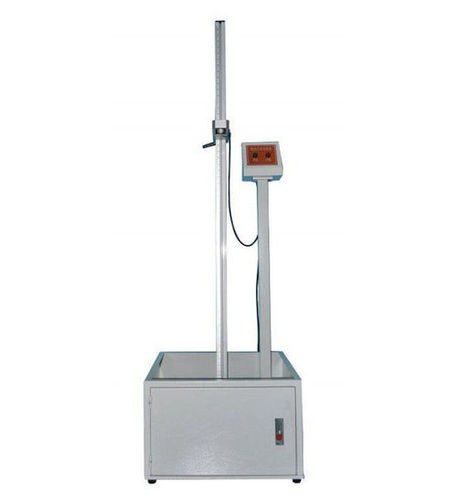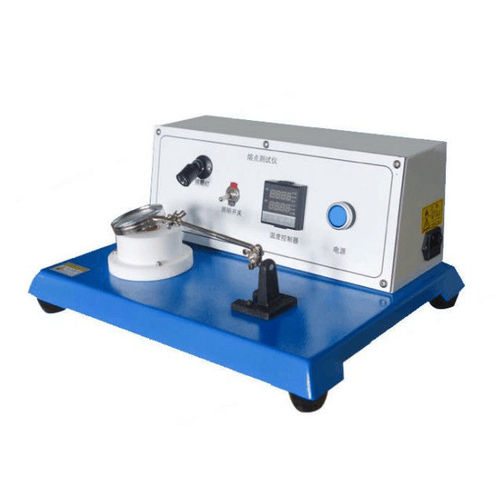
Rubber No Rotor Rheometer Testing Machine
Product Details:
- Power Supply AC 220V 10%, 50/60Hz
- Number of Specimens 1
- Humidity 40%~90% RH
- Operating Voltage 220 10% V AC
- Automation Grade Semi-automatic
- Response Time 2 s
- Accuracy 1% F.S.
- Click to view more
Rubber No Rotor Rheometer Testing Machine Price And Quantity
- 1999.00 - 6199.00 USD ($)
- 1 Set
Rubber No Rotor Rheometer Testing Machine Product Specifications
- 220 10% V AC
- Microcomputer / PLC Controller
- 1
- 40%~90% RH
- AC 220V 10%, 50/60Hz
- Room temperature to 200C
- Automatic temperature control, over-temperature protection, real-time curve display, data storage
- 50/60 Hz
- 0.1 - 5 rpm (adjustable)
- 500 mm
- Applicable to 30-90 Shore A
- Semi-automatic
- 2 s
- 1% F.S.
- RS232/USB
- 1-5 mm adjustable
- O-ring/Sheet, up to 150 150 mm
- No Rotor Rheometer
- Standard air inlet: 8mm
- 0.5~0.7 MPa
- Kilograms (kg)
- 10 samples/hour
- Rubber quality and vulcanization testing
- Bench-top
- 0~20 Nm (Torque)
- LCD digital display
- Standard die: 150 mm
- 0.1 Nm to 20 Nm
- 0.01 Nm
- Rubber compounding, research, and QC
Rubber No Rotor Rheometer Testing Machine Trade Information
- shenzhen
- 300 Set Per Month
- 7 Days
- Carton box
- All India
- ISO
Product Description
Rubber No Rotor Rheometer Testing Machine
Description
The rotorless vulcanometer is the most widely used instrument for controlling rubber quality in the rubber processing industry, rapid inspection, and rubber basic research. It provides accurate data for the optimal rubber compounding formula, accurately measuring the scorch time, the vulcanization time, the vulcanization index and parameters such as maximum and minimum torque.,etc.
The vulcanization instrument includes host computer, computer, temperature measurement, temperature control, data acquisition and processing, sensors and electrical interlocking. The measurement and temperature control circuit consists of measurement and control module, platinum resistor, and heater. It can automatically track changes of the power grid and ambient temperature, automatically correct PID parameters, to achieve rapid and accurate temperature control. The data acquisition system and the electromechanical chain complete the automatic detection of the torque signal of the rubber vulcanization process, and automatically display the temperature value and set value in real time. After the vulcanization is completed, the vulcanization curve and the process parameters are automatically processed, calculated, and printed.
Show vulcanization time, vulcanization torque. The computer displays the vulcanization process in real time and "temperature" change and the "time-torque" change process can be seen at a glance from above.
Characteristics
- High accuracy temperature control and wide range.
- Clock programming function. (setting, modification time)
- Advanced technology switching power supply, wide voltage range.
- Imported integrated circuits and control components.
- Meet the requirements of GB/T16584 (Test Rubber Vulcanization Characteristics with Rotorless Vulcanometer) and ISO6502.
- Powerful microprocessors use high quality imported chips. On the one hand, computers and microprocessors can take signals from the torque sensor and record the signals on the graph. At the same time, the computer and the measurement control module interface exchange data and control the temperature of the mold cavity.
- The rotorless vulcanometer was designed with a series of interlocking functions, including closing the plastic glass door. If the door is not closed, the mold cannot be closed. Only when the door is closed safely can the mold be closed. Only work can be done.
All in all, this type of vulcanizer is more stable, more accurate, cheaper, and more functional than other models. It is the best instrument for testing rubber properties.
Specification
The standard for the implementation of the vulcanization instrument is: ASTM D5289-95 ISO6502-1999(E) GB/T16584-1996
Temperature range: room temperature to 200 degree
Temperature measurement accuracy: 100 to 200 degree,
Temperature stability: 100 to 200 degree
Setting range: 0 to 200 degreeSetting minimum unit: 0.1 degree
Temperature display range: 0 to 200 degree
Display resolution: 0.1 degreeSet the time range: 0 to 200 minutes
Set the minimum unit: 1 minute
Automatic range switching: automatic increase according to actual torque
Compressed air: 0.32Mpa controlled by pneumatic control valve
Swing frequency: 100 times/minute (about 1.7HZ)
Ambient temperature: normal temperature -40 degree, relative humidity less than 80%, no corrosive gas in the air
Power: 2KW
Dimensions: 680*630*1100(mm)
Advanced PID-Controlled Heating System
The integrated electric PID-controlled heating system ensures rapid and precise temperature regulation from room temperature up to 200C, making it suitable for a broad spectrum of rubber vulcanization tests. With automatic overheat protection and an emergency stop feature, the system provides a safe and stable testing environment while maintaining high accuracy and repeatability in results.
User-Friendly Operation and Versatile Data Management
The rheometer incorporates a microcomputer or PLC controller for semi-automatic operation and features an LCD digital display for real-time data visualization. Test data can be exported easily via USB or RS232 to Windows-based software, or directly to a printer. Bilingual operation (English/Chinese) ensures usability for diverse laboratory personnel.
Optimized for Rubber Quality and Vulcanization Analysis
Specifically designed for evaluating rubber compounding and vulcanization, this machine accommodates various specimen types and sizes, with a test torque range of 0.1 Nm to 20 Nm and accuracy within 1% F.S. Its capability to test up to 10 samples per hour enhances workflow efficiency in research, quality control, and production environments.
FAQs of Rubber No Rotor Rheometer Testing Machine:
Q: How does the No Rotor Rheometer Testing Machine ensure accurate rubber vulcanization measurements?
A: The machine utilizes a PID-controlled electric heating system combined with a stainless steel die and high-resolution torque measurement (0.01 Nm) to ensure precise and repeatable vulcanization and quality control assessments. Its real-time LCD display and microcomputer/PLC controller further contribute to data accuracy.Q: What is the process for operating the rheometer and exporting test data?
A: After placing the prepared specimen (O-ring or sheet) in the 150 x 150 mm die and configuring parameters via the LCD interface, users start the test. Results are displayed in real-time and can be exported immediately through USB, RS232, or directly to a connected printer, all compatible with Windows-based software platforms.Q: When should the overheat protection and emergency stop features be used?
A: Overheat protection is an automated safety feature that activates if the chamber temperature exceeds the predefined safe range. The emergency stop button should be used immediately in the event of any unexpected operation or safety concern to halt the testing process and protect both users and samples.Q: Where is this rheometer best applied within the rubber industry?
A: Optimal environments include research and development laboratories, quality control facilities, and production testing stations at rubber manufacturing plants. Its semi-automatic operation and comprehensive data outputs support all critical phases of rubber compounding and vulcanization analysis.Q: What types and sizes of rubber specimens are compatible with this machine?
A: The rheometer is designed to test up to 10 samples per hour, with specimen compatibility for both O-ring and sheet forms, accommodating sizes up to 150 x 150 mm. Its suitable for materials ranging between 3090 Shore A hardness.Q: How does the machine benefit rubber producers and researchers?
A: With high measurement accuracy (1% F.S.), fast response time (2 s), and efficient data management, the instrument helps rubber producers and researchers quickly assess compound quality, optimize formulations, and maintain consistent production standards, ultimately enhancing product performance and reliability.
Price:
- 50
- 100
- 200
- 250
- 500
- 1000+








